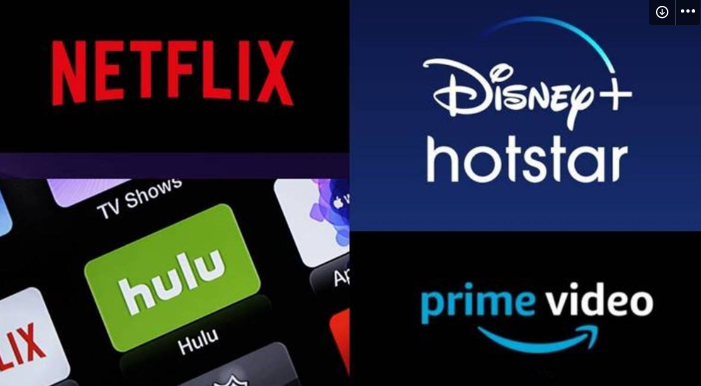In the ever-evolving world of entertainment, deciphering the difference between digital and OTT streaming platforms is vital. Join us on a journey to unravel their mysteries and gain a deeper understanding of these transformative forces. From revolutionizing content consumption to shaping personalized experiences, we’ll crack the code behind digital and OTT platforms’ impact on our entertainment landscape.
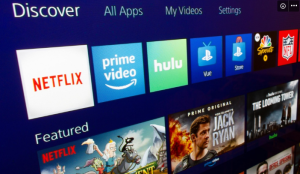
How to Tell the Difference Between Digital and Over-the-Top (OTT) Platforms
What is Digital Media
Definition of Digital Media
Digital Media, a dynamic and dominant force in today’s world, is an umbrella term that embraces various forms of content, all stored in a digital format. This includes everything from text and visuals on websites to digital video and audio, social media platforms, mobile apps, virtual reality environments, and more. Simply put, any content that we consume online falls under the vast expanse of digital media.
Types of Digital Media
Digital media manifests in many forms, enabling us to express, share, and engage in myriad ways. Here are a few key types:
- Websites and Blogs: These are the digital interfaces where brands and individuals share content, from informative articles to personal experiences.
- Social Media: Platforms like Facebook, Instagram, Twitter, and LinkedIn are social media powerhouses that facilitate digital interaction.
- Podcasts and Digital Radio: Audio-focused media that allow users to consume content during their daily commute, at work, or while performing other tasks.
- Digital Video: Platforms like YouTube and Vimeo allow for the streaming of a wide array of video content, from music videos to how-to guides and short films.
- Mobile Applications: Apps on our smartphones or tablets, providing services ranging from food delivery to digital banking, are integral to digital media.
Impact of Digital Media on Businesses and Consumers
Digital media has reshaped the way businesses and consumers interact, benefiting both parties significantly. Businesses enjoy greater reach and precise targeting, connecting with audiences worldwide through personalized messaging. This shift has enabled small businesses to compete with larger ones, thanks to lower entry barriers. Meanwhile, consumers can now access an array of choices, explore products, compare prices, and make purchases effortlessly. Digital media has also fostered enhanced interaction, allowing users to engage with brands, provide feedback, and influence product development.
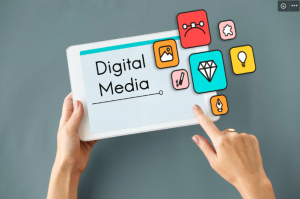
What is Digital Media
Introduction to OTT (Over-The-Top) Services
1. Definition of OTT (Over-the-top)
OTT (Over-the-Top) is a revolutionary term that has redefined the entertainment landscape. In simple terms, it refers to the delivery of video, audio, and other media content directly to viewers via the Internet, bypassing traditional distribution channels like cable or satellite providers. OTT services are taking the world by storm, giving consumers unprecedented control over what, when, and where they watch their favorite shows and movies.
2. Types of OTT platforms
The diversity of OTT platforms is astounding. We have witnessed the rise of global giants like Netflix, Amazon Prime Video, and Disney+, offering an extensive library of on-demand content accessible across multiple devices. Additionally, there are niche-focused platforms catering to specific interests such as sports (ESPN+), anime (Crunchyroll), and documentaries (CuriosityStream). The advent of live streaming platforms like Twitch has revolutionized the gaming and esports industry, fostering a vibrant community of content creators and avid viewers.
3. OTT’s influence on the entertainment industry
The influence of OTT on the entertainment industry cannot be overstated. It has empowered content creators, allowing them to produce high-quality shows and movies without the traditional gatekeepers. As a result, we are witnessing an explosion of creativity and diversity in storytelling. OTT services have disrupted the status quo, challenging the dominance of cable TV and cinema. They have given consumers the freedom to personalize their viewing experiences, binge-watch entire seasons, and discover hidden gems from around the world.
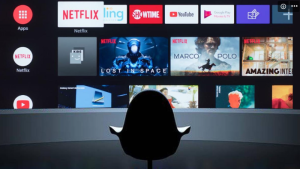
Introduction to OTT
The Evolution of Digital and OTT Platforms
Historical Context and Development of Digital Platforms
Step back in time to the dawn of the digital age, where a technological revolution was brewing. With the advent of the Internet, traditional entertainment mediums faced an unprecedented challenge. As the digital landscape expanded, so did the opportunities to create, distribute, and consume content in ways never before imagined.
Digital platforms emerged as the vanguard of this revolution. Companies like YouTube, Hulu, and Vimeo pioneered the online video space, allowing users to upload and share their own videos with the world. Suddenly, anyone with a camera and a creative spark could become a content creator, challenging the traditional gatekeepers of the entertainment industry.
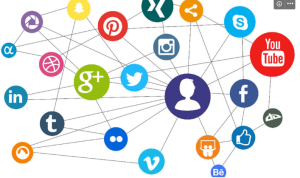
Development of Digital Platforms
The Emergence and Growth of OTT Platforms
But the story doesn’t end there. Enter Over-the-Top (OTT) platforms, the next evolution in the digital entertainment realm. OTT platforms shattered the boundaries of traditional television and cinema, offering a captivating alternative for viewers seeking greater freedom and control.
Fueling this revolution were giants like Netflix, Amazon Prime Video, and Hulu. These platforms revolutionized the way we consume content, liberating us from the shackles of scheduled programming. No longer bound by time or location, viewers could indulge in their favorite shows and movies at their convenience, on any device they desired.
The growth of OTT platforms has been nothing short of extraordinary. As the technology advanced and internet speeds skyrocketed, these platforms expanded their offerings, providing an ever-expanding library of on-demand content. Moreover, they embraced original programming, investing in captivating stories and star-studded productions that rivaled traditional studios.
OTT platforms captivate global audiences, challenging the established order and disrupting the entertainment industry. Leveraging data-driven insights, they curate personalized recommendations, ensuring content resonates with each viewer’s tastes.
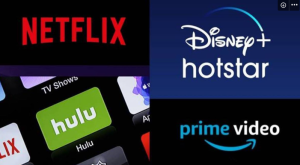
The Coming of OTT Platforms and Their Growth
Comparing Digital Media and OTT Platforms
Deciphering the difference between digital and OTT platforms unlocks a world of diverse entertainment possibilities.
| Digital Media | OTT Platforms | |
|---|---|---|
| Content Delivery | Real-time content delivery with live updates and instant sharing. | On-demand content delivery, allows users to access content anytime, anywhere. |
| User Experience | Interactivity is a key focus. Users can engage with content in various ways, e.g., by liking, sharing, commenting. | The focus is more on content consumption. User interaction is mainly through content choice and playback controls. |
| Advertising Model | Primarily ad-based. Users often see advertisements as part of the content. | Both ad-based and subscription-based models exist. Some platforms offer an ad-free viewing experience for a subscription fee. |
| Reach | Can potentially reach a global audience, depending on the platform and content. | Reach is also potentially global, but it can be limited by the platform’s content rights and licensing agreements. |
| Personalization | Personalization is usually based on user behavior, demographics, and interests. | Personalization is often more advanced, with content recommendations based on viewing history and preferences. |
| Connectivity | Quality of user experience is dependent on the user’s internet connection, but some content (like text and images) can still be accessed on slower connections. | A high-speed internet connection is crucial for a good user experience due to the bandwidth needed for video streaming. |
| Challenges | Data privacy concerns, ad fraud, and difficulty in achieving personalization. | Issues such as content piracy, dependency on internet speed, and a fragmented market. |
Should We Be Using Digital Media or OTT Platforms?
We should embrace both digital media and OTT platforms. Digital media encompasses a wide range of content available online, including news articles, blogs, podcasts, and more. On the other hand, OTT platforms provide a convenient and personalized way to consume video and audio content over the internet. By leveraging both digital media and OTT platforms, we can access a diverse array of content and enjoy a customized entertainment experience tailored to our preferences.
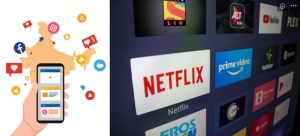
Digital media or OTT platforms?
Conclusion
In conclusion, we have explored the difference between digital and OTT platforms. While digital platforms encompass various forms of online content, OTT platforms revolutionize the way we consume video and audio content. As the media landscape continues to evolve, these platforms play a pivotal role in shaping our entertainment experiences. The ongoing evolution in this realm promises exciting possibilities for the future, as technology empowers us to personalize our content consumption like never before. Embrace the dynamic nature of the media landscape and embark on a journey of endless entertainment possibilities.
